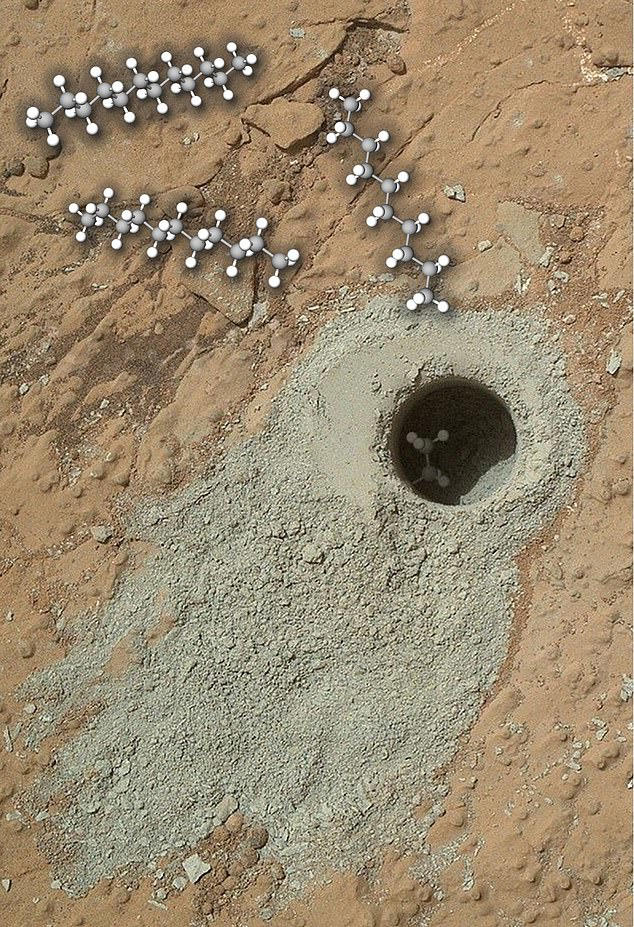By Joy Ewere
Scientists have discovered organic molecules of “unprecedented size” on Mars, providing further evidence that life may have once existed on the Red Planet.
The discovery was made in Martian rock samples that date back billions of years, revealing long carbon chains with up to 12 consecutive atoms. These molecules— the longest ever identified on Mars— could be derived from fatty acids, which are the building blocks of fats and oils on Earth and typically form through biological processes.
This finding is considered a major development in the search for signs of life on Mars. The samples were collected by NASA’s Curiosity Rover using the ‘Sample Analysis at Mars’ (SAM) instrument, which has been studying the Gale Crater since 2012. SAM’s gas chromatograph and mass spectrometer were crucial in identifying these molecules within Martian mudstone.
The organic molecules found include decane, undercane, and dodecane, and their preservation is attributed to Mars’ cold, dry climate and the lack of geological activity. These factors have helped preserve these organic compounds for over 3.7 billion years, coinciding with the period when life first emerged on Earth.
While fatty acids are vital components of living cells on Earth, they can also form through non-biological processes. However, given their strong association with biochemistry on Earth, these molecules’ presence on Mars raises the possibility that they could be biosignatures of past Martian life.
The research, published in the Proceedings of the National Academy of Sciences (PNAS), suggests that these long-chain alkanes may have originated from carboxylic acids—another class of molecules that could be produced through both biological and abiotic processes. Understanding their origin and distribution is now a key focus in the search for life on Mars.
Looking ahead, the discovery sets the stage for future missions, including the European Space Agency’s ExoMars mission, scheduled for launch in 2028, which aims to explore further evidence of life-like chemistry on the Red Planet.
In addition to this discovery, another study has suggested that Mars once had a more hospitable environment, including sunlit, sandy beaches and gentle waves, pointing to an ancient, wetter Mars that may have supported life. Using data from China’s Zhurong rover, scientists found strong evidence of an ancient northern ocean, indicating that Mars once had a significant body of water, which could have been crucial for sustaining life.
These groundbreaking findings offer new hope in the search for extraterrestrial life and provide a deeper understanding of Mars’ potential to have supported life in the past.





